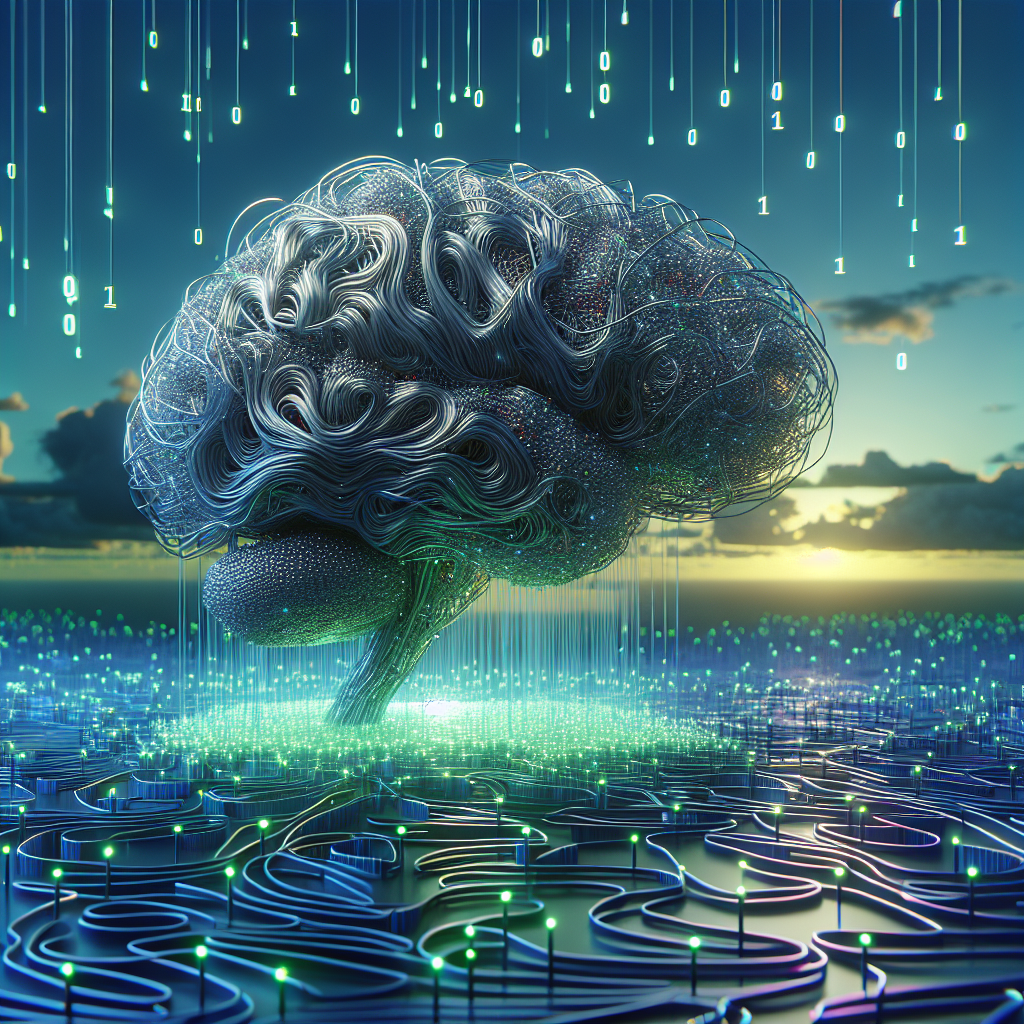Crafting Cutting-Edge Generative Models with TensorFlow

In today’s rapidly advancing artificial intelligence landscape, generative models have emerged as a cornerstone of innovation across diverse industries. These powerful tools are adept at creating complex and nuanced content that mirrors real-world data—be it images, music, or text. As the demand for sophisticated AI applications grows, understanding how to fine-tune generative models for specific uses becomes increasingly crucial. Developed by Google, TensorFlow provides an extensive framework ideal for building advanced neural network training systems. In this comprehensive guide, we’ll delve into harnessing TensorFlow’s capabilities to craft cutting-edge generative AI models.
Introduction
Generative AI models are revolutionizing artificial intelligence research and application. These models enable machines to generate new data points resembling your dataset, opening a myriad of possibilities in content creation, design, and decision-making processes. Among the key players in this domain is Google with its TensorFlow machine learning platform and OpenAI, renowned for pioneering advancements in AI model research.
The Impact of Generative Models
The impact of generative models is far-reaching. In creative industries such as art, music, and fashion, these models are used to produce novel designs and compositions that push the boundaries of human creativity. In technology sectors, they aid in developing more realistic video games or simulations by generating high-quality textures and environments. Additionally, generative models contribute significantly to scientific research by enabling the creation of synthetic datasets for training machine learning algorithms where real-world data is scarce.
Understanding Generative Models
Generative models are a class of artificial intelligence algorithms designed to learn the underlying distribution of data so they can generate new, synthetic instances. Some popular types include:
- GANs (Generative Adversarial Networks): Comprising two neural networks—the generator and discriminator—that compete against each other. This competition leads to progressively better outputs as both networks strive for improvement.
- VAEs (Variational Autoencoders): Employing a probabilistic approach to data generation by learning an approximation of the input data distribution, VAEs are particularly useful in scenarios where capturing uncertainty is important.
- Autoregressive Models: Predict future values based on past observations, commonly used in language models like GPT and BERT. These models excel in sequential data prediction tasks such as text generation.
Why TensorFlow for Generative AI?
TensorFlow stands out as one of the most popular frameworks for building and training neural networks. Its flexibility, scalability, and comprehensive suite of tools make it particularly well-suited for developing generative AI models. Moreover, TensorFlow’s seamless integration with Google Cloud provides a robust environment to efficiently train complex models.
Setting Up Your Environment
To embark on crafting cutting-edge generative models using TensorFlow, start by setting up your development environment:
- Install TensorFlow: Ensure you have the latest version of TensorFlow installed. You can do this via pip:
pip install tensorflow - Select a Development Platform: Consider using platforms like Google Colab for quick experimentation or Jupyter Notebooks for more structured projects.
- Prepare Your Dataset: Gather and preprocess your data to ensure it is suitable for training generative models. This involves tasks such as normalization, augmentation, and splitting into training/validation sets.
- Set Up Your Computing Resources: Depending on the complexity of your model and dataset size, you may need access to GPUs or TPUs to speed up training times.
Implementing Best Practices in Data Preprocessing
Implementing best practices in data preprocessing is crucial for building effective generative models using TensorFlow. Properly prepared data ensures that the models can learn meaningful patterns rather than noise:
- Data Cleaning: Remove any irrelevant, duplicate, or corrupt data points to improve model accuracy.
- Normalization and Scaling: Standardize your dataset so all features contribute equally to the learning process.
- Augmentation Techniques: Use techniques such as rotation, flipping, or color adjustment to increase the diversity of your training set without gathering more data.
Exploring TensorFlow’s Features for Generative Models
TensorFlow offers several features that facilitate the creation and refinement of generative models:
- Keras API: A high-level neural networks library integrated into TensorFlow, Keras simplifies model design and experimentation with user-friendly interfaces.
- Eager Execution: Allows immediate evaluation of operations without building graphs, making debugging easier and more intuitive.
- TensorBoard: Provides visualization tools to monitor training processes, helping identify bottlenecks or areas for improvement in your models.
Real-world Applications of Generative AI Models
Generative AI models are finding applications across various industries:
- Healthcare: Enhancing medical imaging through synthetic data generation for training algorithms, leading to more accurate diagnostics.
- Fashion: Creating virtual prototypes and personalized designs using generative techniques, which streamlines the design process and reduces costs.
- Entertainment: Generating realistic CGI effects or composing music tracks with deep learning, transforming how content is produced in these industries.
- Finance: Predicting market trends by simulating various economic scenarios to aid in strategic decision-making.
Challenges and Future Directions
While generative models offer immense potential, they also present challenges such as ethical considerations around data privacy and the need for responsible AI usage. As research progresses, we anticipate improvements in model robustness, interpretability, and efficiency, making them even more powerful tools across different fields.
Ethical Considerations
As with any technology, it is essential to consider the ethical implications of deploying generative models:
- Bias and Fairness: Ensure that training data does not perpetuate or amplify existing biases.
- Security Risks: Be vigilant about potential misuse in creating deepfakes or other malicious content.
- Transparency: Strive for transparency in how these models are developed and used, fostering trust among users and stakeholders.
Conclusion
Crafting cutting-edge generative AI models with TensorFlow is an exciting journey that combines the power of advanced neural network training, robust data preprocessing, and careful fine-tuning for specific applications. By leveraging Google’s TensorFlow machine learning platform and adhering to best practices in model development, you can unlock new dimensions of creativity and efficiency across diverse industries.
Are you ready to harness the transformative power of generative models in your business? Our AI Agentic software development and AI Cloud Agents services can help you implement cutting-edge solutions tailored to your unique needs. We’ve assisted companies from healthcare to fashion in leveraging TensorFlow for remarkable innovations.
Contact us today for a consultation to explore how we can help you craft the generative models that will set your business apart. Visit our contact page and use our forms to get started. We’re more than happy to field any questions and provide assistance every step of the way, ensuring you achieve your AI objectives seamlessly.
By leveraging our expertise, you can unlock new dimensions of creativity and efficiency in your operations, staying ahead in an ever-evolving digital landscape.
Curious about the depth and breadth of my AI & ML expertise? View my certifications.
